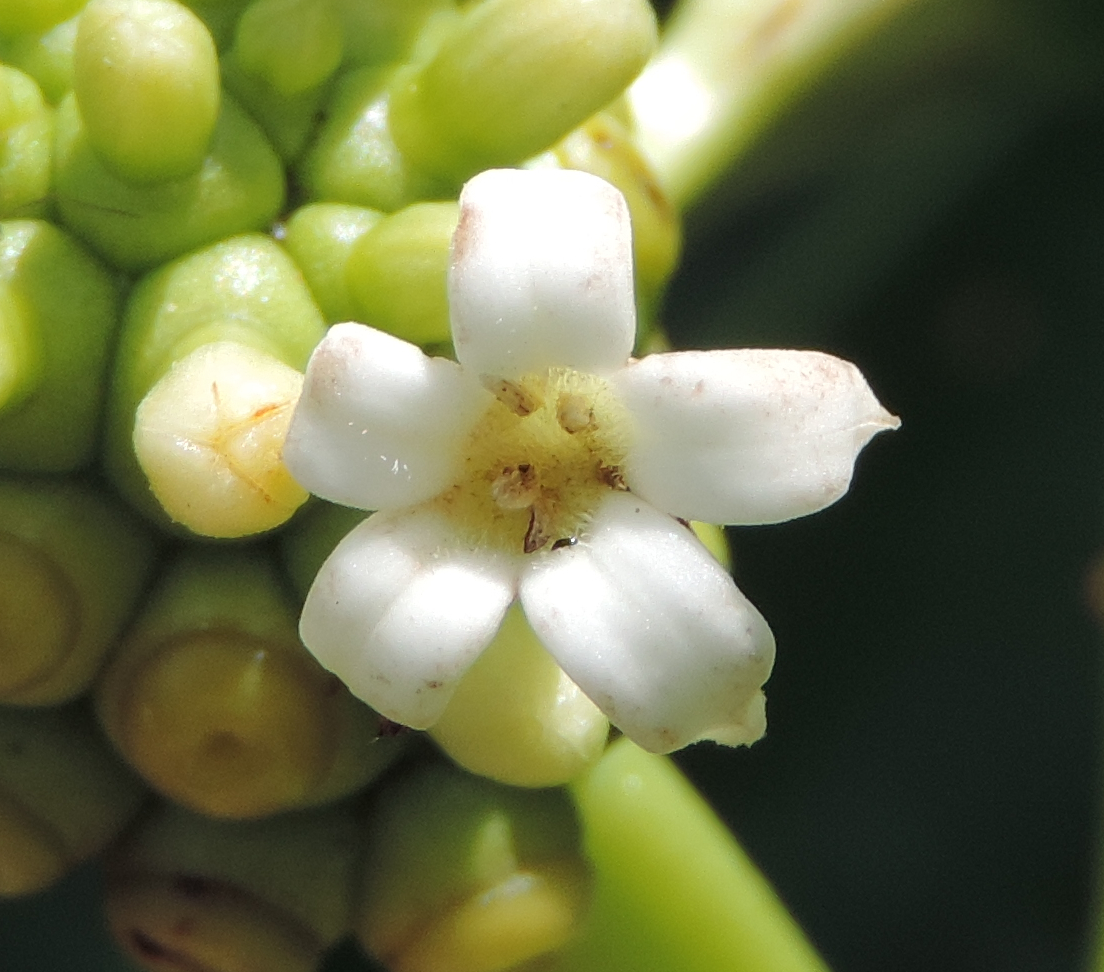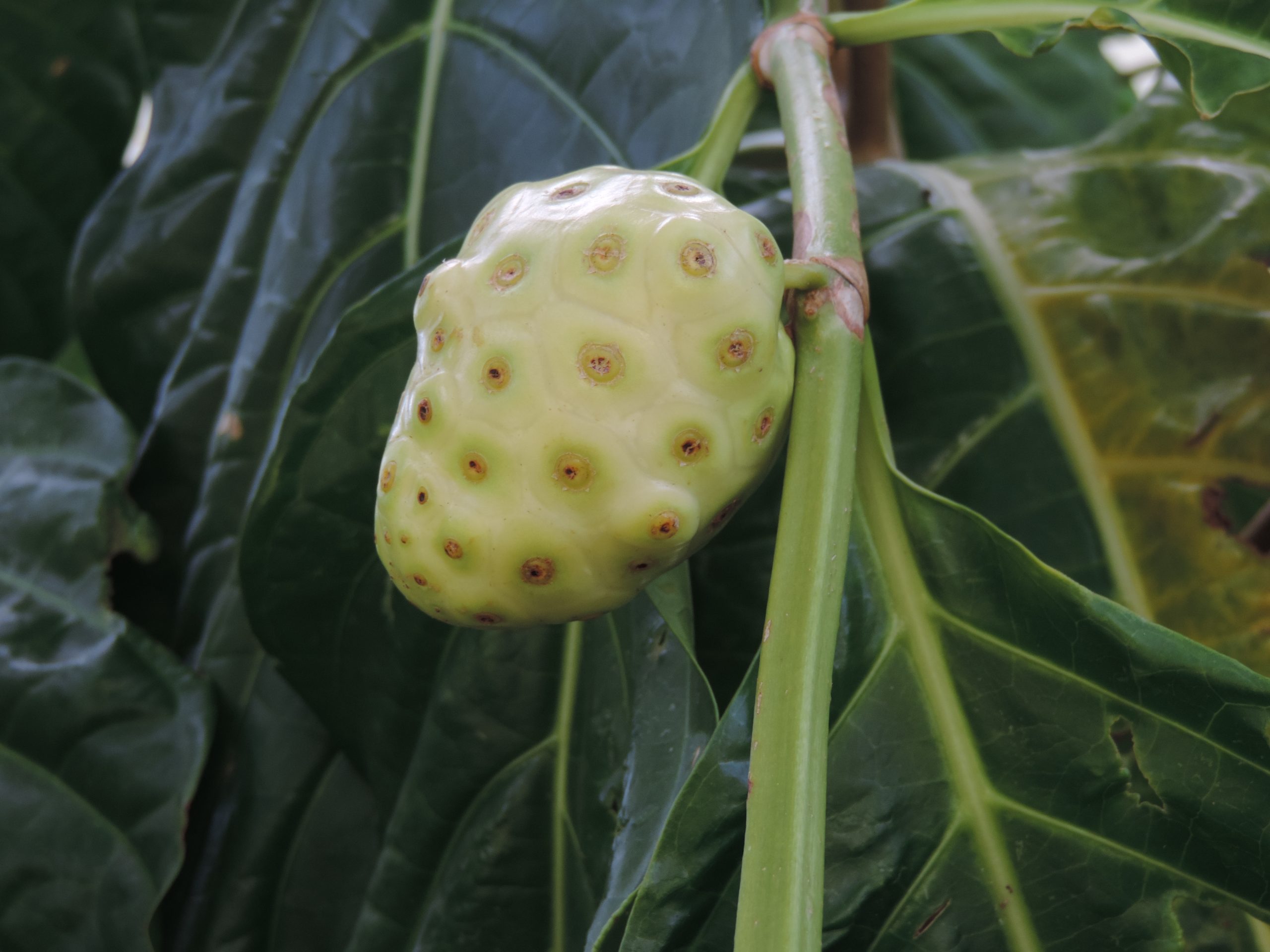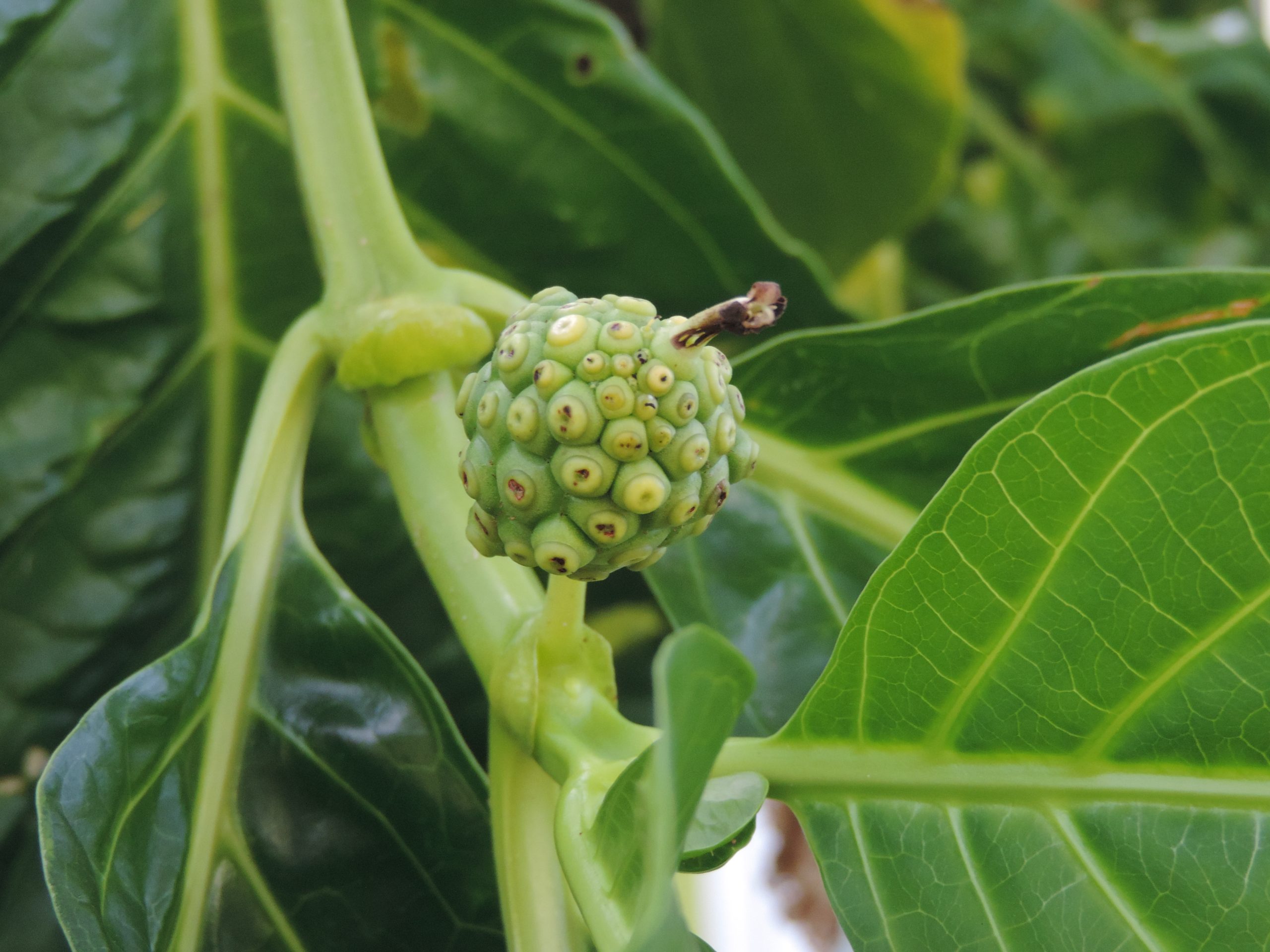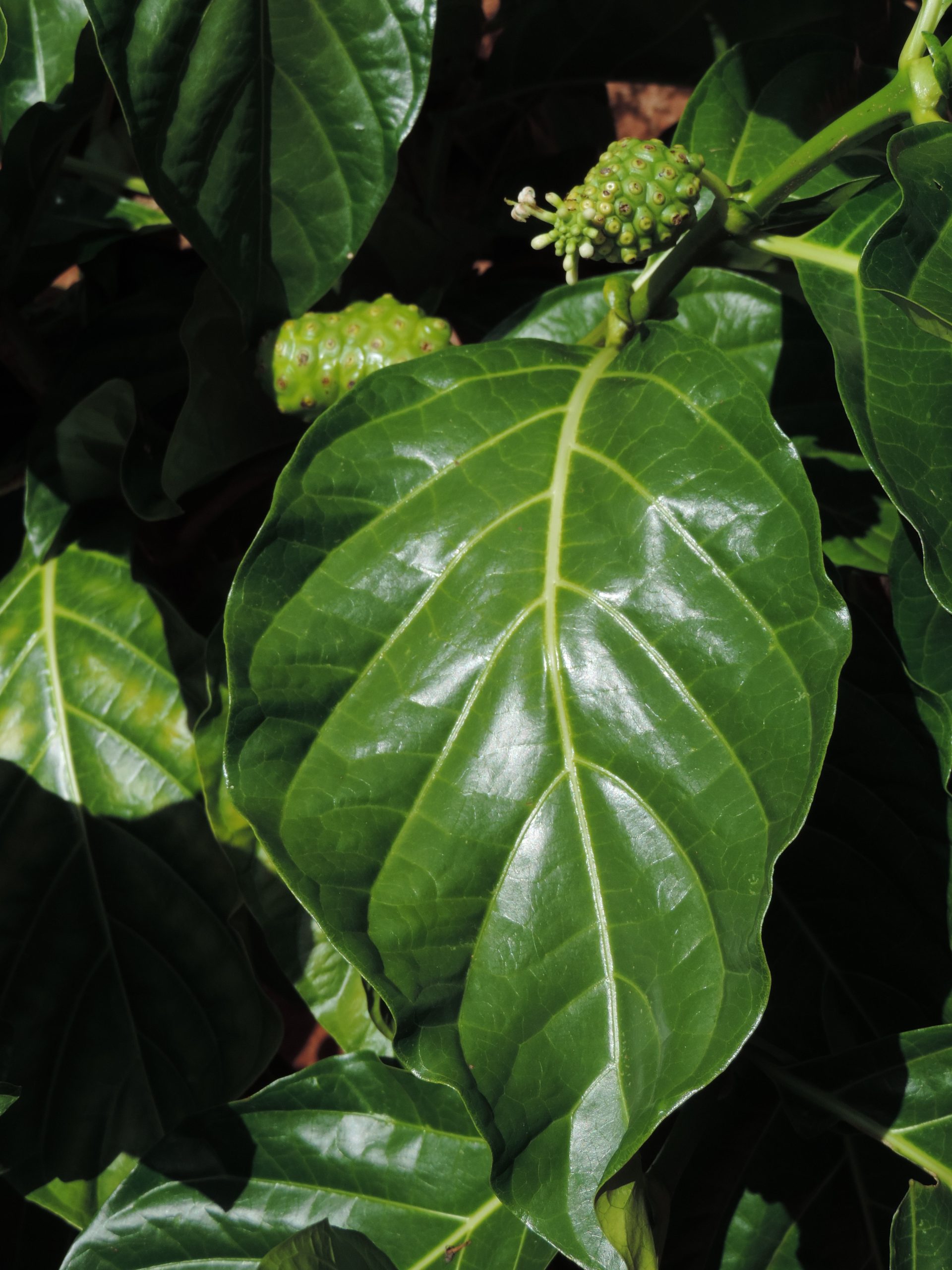Habit: Morinda citrifolia grows as a large shrub to small tree up to 6 m in height with square stems. Stipules up to 2 cm in length. The shiny leaves are arranged oppositely, elliptic up to 50 cm in length, with an acute leaf apex and an entire leaf margin.
The complete, perfect, actinomorphic flowers are in heads in the leaf axils. The calyx has 5 -6 fused, sepals. The corolla has 5, fused, white petals that form a tube with a pubescent throat. There are 5 stamens that are fused to the corolla. The ovary is inferior with 4 locules. The flowers are buried in the peduncle and the fruit is a fleshy compound structure that is white to off yellow, ovoid to elongate to 12 cm in length. The fruit has hexagonal lines surrounding a dark “eye”. Each represents a carpel.
Habitat: Morinda citrifolia grows in Human Altered environments (yards, fields).
Distribution: Morinda citrifolia is NOT native to the Lucayan Archipelago. It is native to the Indian subcontinent, southeast Asia, the Pacific and Australia. It is now widespread in the Caribbean, Central America and parts of South America, and Florida.
Medicinal/Cultural/Economic usage: Morinda citrifolia has be used medicinally in the Bahamas to treat gastrointestinal issues, circulatory problems, and in strengthening teas.
The fruits are edible and are used for juice.
When the fruits are ripe they have a particularly noxious odor.



